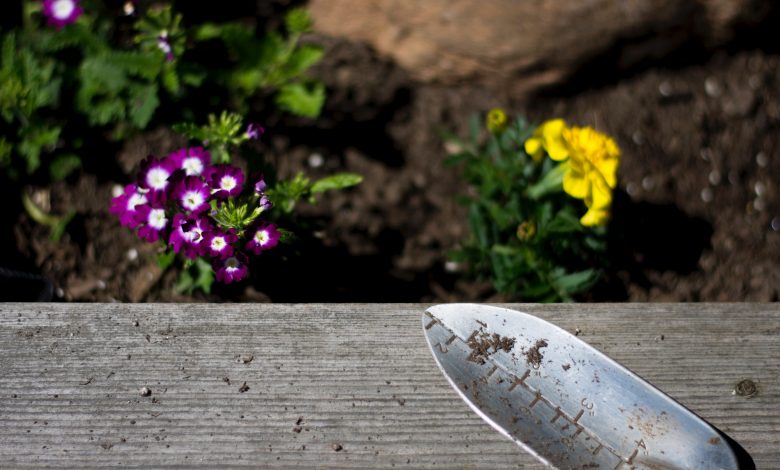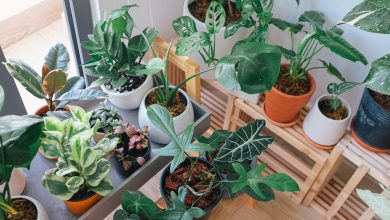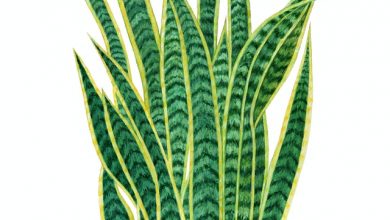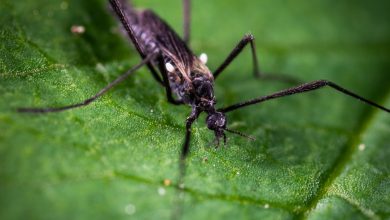Essential Tips That Every Gardener Should Know

Gardening is an activity that many of us like to do. It can be relaxing, rewarding, and enjoyable when we showcase our green thumbs with each planting season. There is always room to grow when it comes to sowing and cultivating flowers and plants. It doesn’t matter if you are an experienced gardener or not; you should always strive to have a better planting period than your previous one. If you have found yourself stuck in a rut this year, the following tips may just be what is needed to get you going again. These important gardening guidelines help your plants to grow their best. When you start implementing this advice for yourself, you are going to see a world of difference in your gardening efforts.
Pruning
A basic definition of pruning is manipulating a plant’s growth to follow specific shapes or patterns. It is meant to stimulate growth and keep your flowers and foliage healthy. Pruning is an integral part of gardening that all planters should know. While it may seem overwhelming when you are just starting, it gets easier with more experience under your belt.
Knowing when to prune is just as important as learning how to do it. You should never cut back your plants in late summer or fall. When you do this, you are encouraging new growth that can’t survive cold temperatures. A good rule to follow lies in the bloom. If a plant shows its flowers in early summer, you should prune the plant shortly after. However, if a plant blooms in mid to late summer, you need to cut back the plant in late winter or early spring before it buds.
You need to know where to cut every branch and stem before you pick up your gardening shears. You should always prune near a growing point. This point can be the ground line, branch, or bud. As you cut, you need to remind yourself that you should never cut a stem or branch at its midpoint. Branch stubs are not desirable and can stunt growth.
Branches that need to be cut include dead ones. These brittle limbs are easy to point out, as they have no new growth on their surface, and any buds are browned and withered. Also, look out for offshoots of plants that are growing from the roots. Perpendicular shoots that have a different growth pattern than the main branches should also be removed.
When you are thinning out your plants and shrubs, the process is the same. Cut back the denser areas that aren’t receiving much light. Aim for the branches and shoots that are located deeper inside the plant. The exterior branches and offshoots should ideally stay as they are.
You should always maintain a regular schedule for pruning, but take care that you are not overdoing it. Too much cutting can cause irreversible damage to a large portion of your plant. If you are unsure about what to prune, it is best just to leave your garden as is until you gain the experience to cut well.

USDA Hardiness Zone
Before you put your shovel into the ground, get to know your hardiness zone. This information acts as a guide for what you can plant and when. It divides the country and Puerto Rico into 13 areas based on their winter climate and temperatures. The first zone is the coldest. It includes Alaska and surrounding territories. The 13th zone includes warm and tropical Puerto Rico.
As you shop for plants and seeds to put in your garden, you are going to notice that they are almost always labeled according to the preferred hardiness zone. Go online to check out where your region falls on the USDA map. From time to time, the government does make changes to the chart, so you should make it a habit always to check where you lie on the map.
If you want your flowers, trees, and crops to grow and come back every year, it is necessary to follow these planting rules as close as possible. If you choose to have a plant that doesn’t do well in your region, consider potting it so you can bring it inside whenever extreme temperatures occur.
Perennials
Perennials are flowers, trees, and shrubs that live longer than two years. These ornamental plants are considered low maintenance and more tolerant than others. When you include these in your garden, you should keep in mind that they are slow growers. You do need some patience as you wait for them to achieve full maturity. They generally need three years to reach this point.
Thankfully, during this long growing time, your boredom is not going to set in. These plants are known for giving your garden never ending surprises. When they sprout from the ground, they creep across the dirt floor, sprawl behind and around other plants, and even bloom at times. Keep an eye out for how your perennials are growing and take pictures every month to see how well they are doing in your yard.
When selecting perennials, make sure you choose flowers that are right for your environment. Some do stay fresh and green in warmer climates, while others can die when frost hits and then come back again the following year.
Perennials can add gorgeous pops of color in your yard. Red, purple, pink, yellow, and green flowers are just some of the hues you can expect when you choose these plants. Patience is essential for all gardeners who decide to put these in their beds. The wait is worth it, though – with proper maintenance, you get to see your pretty blooms greeting you every year.
Sunlight
You should know the minimum amount of sunlight that your plants need to survive. Flowers, plants, vegetables, and fruits all require varying amounts, so you can never assume one plant is the same as another. While all plants need the sun to grow, the intensity and time are two elements that matter the most. Plant sunlight requirements can fall in any of these categories:
- Full Shade: These plants and flowers need less than three hours of direct sunlight a day. Examples of full shade plants include begonias, ferns, and caladiums. Plants like these can dress up any dark area in your garden.
- Part Shade: Plants that fall into this category need anywhere from three to six hours of sunlight per day. They also cannot be left without protection from the mid-day sun. The best type of sun for these flowers is during the morning and late afternoon. Bluebells and soapworts are both good plants to include in your garden that require these sun guidelines.
- Part Sun: The plants that need partial sun thrive in three to six hours of light daily, but they do not need protection from the hottest times of the day. Daylilies, wild indigo, and balloon flowers all fall under this category.
- Full Sun: Full sun flowers and plants need a minimum of six hours of direct sun each day. This is the type of light that is found in open areas of your yard. Many are drought tolerant and also do well when potted. Some full sun perennials include peonies, thrifts, and lavender.
It’s important to compare the plants you want to include in your yard to your existing landscape. Flowers and shrubs can fail to thrive when you don’t pay attention to their sunlight requirements. Take this knowledge and plant the best blooms that work for your home.

Watering
In addition to sunlight, all plants need water to thrive well. You should always have a practical plan for watering in place. Make sure your garden is placed in an area that is close to water hoses and spigots. Watering cans can also be used, but they are less convenient than other water sources.
Try to water your plants when the sun is first coming up in the morning. Water evaporates less during this time, and it also allows more of the liquid to be absorbed by the soil. Be careful when bringing out your hose during the evening hours. As the sun goes down, your plants are going to stay wet longer under the moonlight. This dampness can facilitate mold, mildew, and other diseases from appearing.
Water should be applied as close to the ground as possible. Plants absorb moisture through their roots, and you want to make sure those plant parts are getting a good supply of water when they need it.
Every plant is different when it comes to the amount of water that is needed to stay alive. However, you should look out for any signs of decay or perishing in your flowers and leaves. The ground should remain moist with no pooling water. In general, you want your soil to absorb at least seven inches of water to encourage strong root growth.
Weeding
Weeds are an unavoidable obstacle in all gardens. These pesky intruders seem to pop up overnight as they try to take over entire garden beds. When left to their own devices, weeds can start to take away the nutrients and water that are required for other surrounding plants to grow well.
Controlling your weeds is an arduous process, but it is necessary for a thriving garden. If you want to prevent weeds from becoming a problem, you can use mulch, woodchips, and pine needles to smother them. These organic materials keep the ground cool and prohibit light from getting inside. As a result, weeds can’t thrive in the environment.
If you already have weeds growing in your garden, start pulling them out after a rain or watering. It is much easier to pull weeds when wet. The drier conditions can lead to the plant snapping at its stem, which still leaves its roots in the ground. Some plants can be irritating, so it’s best to wear gloves when you extract them from the ground. Take a bag or tarp with you to collect the intruders as you go.
When you are unable to pull the weeds, you can cut off the head of the plant. This chop gives you a few weeks until they start growing again. While you are going to see them come back when you use this method, it does help to limit their growth and expansion.
As you water your plants, try to avoid areas that are prone to weeds. Depriving them of hydration helps to kill them faster. You should also enrich your soil whenever you can since fewer weed seeds germinate in nutrient-rich dirt.
Bulb Maintenance
Gardeners who plant bulbs should know how to maintain them, not just in the growing season. Proper care right before and during a ground freeze is essential to regenerate new growth.
Spring Bulb Care
Spring bulbs bloom in the spring and go dormant by the middle of summer. As the foliage starts to fade, it is important that you don’t cut off any leaves too early. The leaf colors naturally go from green to yellow, as its energy is now located inside the bulb itself. When they have been yellow for a couple of days, proceed to cut off the foliage.
Flowering is also important when it comes to bulbs. As the spring flowers bloom, remove them at the first sign of fading. By doing this, the plant now returns the remaining energy into itself instead of into the seeding process.
Spring bulbs usually don’t need fertilizer to grow successfully. However, if you do decide to use some, make sure you add it to your garden soil either when you plant the bulbs or as they begin to grow from the ground.
Summer Bulb Care
Summer bulbs should be planted in early to mid-spring. Make sure all threats of frost have passed, and temperatures are warm. When you plant the bulbs, the soil should be well-drained and properly aerated. These plants are easily susceptible to mildewing and rot when they are sitting in wet conditions.
You can increase drainage for the bulbs by including a few inches of sand or organic material underneath them. Watering should only be done when the ground is no longer moist. Cut back its flowers as they fade to encourage more blooms to come. Unlike spring bulbs, summer bulbs prefer fertilized soil, so make sure you are giving them an adequate amount of nutrients during their growing season.
As summer turns into fall, gardeners need to prepare to dig up the bulbs before the first frost comes. They need to be stored indoors in a cool and dry environment. This location can be a basement, garage, or closet. Check on the bulbs throughout the winter to confirm that they are doing well in their dormancy.
Growing Vines
Vines and climbing plants can grow upward or downward. The majority grow rather quickly and can cover most surfaces when properly cared for. It is not unheard of for the tendrils of a plant to reach 30 feet or more.
Plant vines where you want to liven up a dead space. This area can include walls, fences, trellises, and archways. You can let your vines and climbers run free for a more natural look, or you can train them to grow on a trellis or lattice. As they grow bigger, weave the leaves and flowers into the supports. It is easy to direct them where to develop with a gentle hand. As the plant reaches the end of the support structure, there is no need for pruning or cutting. Just weave the vine the opposite way to allow it to grow back into the trellis.
When your vines have grown to the size and shape you desire, you can prune them back as needed. Since they are such fast growers, you may be pruning the plant back several times during the season. Simple gardening shears can do the hard work. These climbers are versatile and don’t require much to reach great lengths. You can use them indoors or outdoors – there is so much that can be done with just one plant.

Rose Care
Roses are one of the most beloved flowers of many gardeners across the country. The fragrant blooms and green foliage are enough to make anyone want to include them in their yard. However, some planters tend to shy away from these plants. Many fall victim to their fear of maintaining them. In reality, rose maintenance is a lot easier than some may think. Anyone can have beautiful looking flowers in their gardens when they follow these tips:
Easy Beginnings
If you are unfamiliar with growing roses, it is best to start with a potted plant. Just follow the directions on the container to transplant the flowers from the box to the ground. These types of roses are easy to plant and multiply. Find roses that work for your garden, and ensure they are going to get enough sun to allow them to flourish.
A Good Environment
Roses need an excellent garden environment to grow well. A rose bush needs at least six hours of sunlight and to be protected from extreme heat and wind. Soil needs to be nutrient-rich and well-drained. Roses enjoy dirt that is mixed with compost or rose-friendly fertilizer. You can also add in moss or other organic materials to help increase the quality of the soil.
Planting Times
Roses benefit from spring or fall planting. Make sure there are no signs of frost when you are gardening, as this allows the roots ample time to establish themselves in the soil. Roses do go dormant over the winter, so if you plan on sowing them in the fall, give them at least six weeks in the ground before the freezing temperatures come.
Plant roses on a calm and overcast day if you can. When you are gardening during the hottest part of the day, they can quickly become stressed during the transplantation process. Early morning is also an ideal time to get the flowers into the ground if you can’t wait for a cloudy day.
Hole Size
Roses need a deep foundation when starting. Create a hole in the ground that is deep and wide enough to make room for the roots. The soil needs to have good drainage for several inches. When you plant the rose bushes together, give each plant about three feet of space between each other.
Feeding and Watering Times
As stated earlier, rose bushes need to be fertilized regularly. You can buy rose food from your nursery, or you can add organic materials and compost and work it into your garden bed.
Soil moisture should be kept consistent throughout the season. Follow the directions that were included with your plant, and spot check the soil a few times a week. The ground should never be dry or overly wet.
Pruning
Remove all dead and diseased branches as soon as possible. Heavy pruning should be done in the spring with lighter cutting throughout the season. When you do cut, all snips should be made at a budding point. You never want to reduce the stem of a rose in between these areas. It can do a lot of damage and even kill large areas of the plant. Luckily, a lot of rose bushes don’t need as much pruning as some may think. They are very self-sufficient as they grow.
Keep your roses healthy to prevent disease and decay from wiping them away. Mold and insect infestation can contribute to stunted growth and even plant death. Research the safest and most effective way to eliminate any threats to your rose bushes and garden. A proactive approach is key to having these gorgeous blooms come back for more than one season.
Creating the garden of your dreams is something a lot of gardeners dream of when spring comes around. By arming yourself with this simple but important gardening knowledge, you are already ahead of the game. Have patience as each season passes. With some tender care and experience, your garden fantasy is soon going to be your reality.



